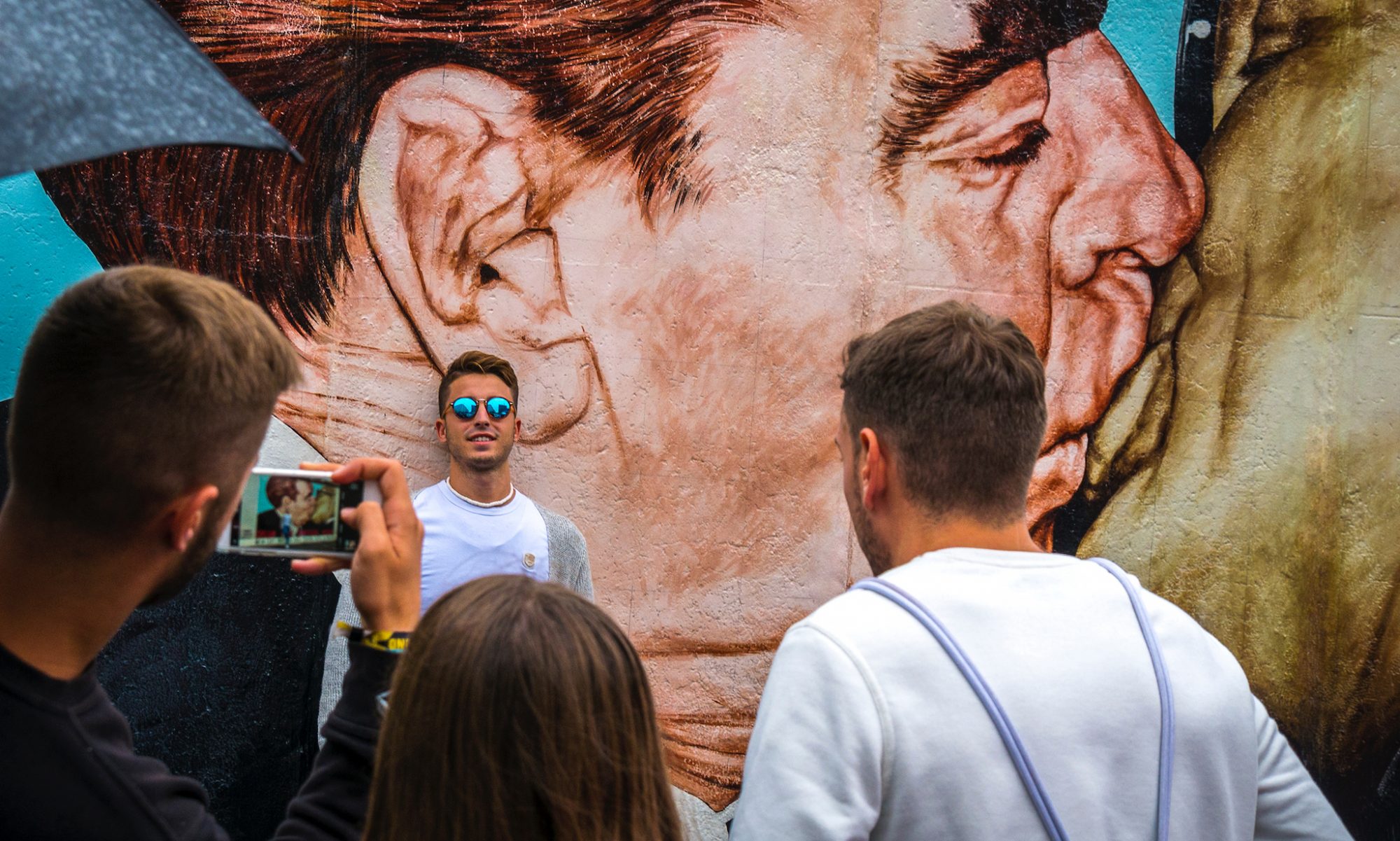

These images, taken almost 120 years apart, show not only the great changes this location has undergone, but also how the basic layout is still very recognisable.
The image from c.1900 shows a still functioning rail-line from the Anhalter main rail station just south of Potsdamer Platz, crossing the Landwehr canal on an iron riveted bridge, which is itself crossed by an iron box-bridge serving the U1 and U3 metro lines.
The Anhalter main rail station was once one of Berlin’s most important and busiest rail links, but extensive bomb damage suffered during the Second World War reduced rail services to a minimum, which the subsequent division of Berlin only compounded, as the Station was situated in West-berlin, but served only stations in Soviet occupied East-Germany.
The station was eventually closed and demolished, only a fragment of the station now remaining as a memorial.
The image from 2019 shows how the basic layout still remains, although all traces of the original structures are long gone, a box-bridge still crosses the canal as part of the metro, but below there is now a pedestrian bridge, the area having since been transformed into one of Berlin’s most loved recreational areas.
- Frobenstraße Bridge
- Lietzensee Park
- Gendarmenmarkt 1951
- Goethe-Schule-Wilmersdorf
- Berlin Cathedral
- St. Hedwig’s Cathedral
- Friedrich Ludwig Jahn in the Hasenheide
- Brandenburg Gate, 1951
- Charlottenburg Palace
- Stadtpark Schöneberg
- Straße des 17 Juni
- The Brandenburg Gate
- Berlin Cathedral
- Bülowstraße
- The Altes Museum
- Palace Bridge
- Old Fritz
- The Gendarmenmarkt
- The Bode Museum
- The Anhalter Bridge
© Andrew James Kirkwood – 2024




